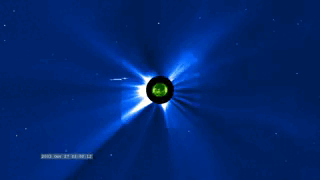
Coronal mass ejections (CMEs) and solar flares are the most energetic phenomena in our solar system. CMEs are giant billion-ton magnetic plasma clouds expelled from the Sun at speeds from 100 to over 3,000 kilometers per second, and can hit the Earth in a matter of days, it accidentally gets in the way. Heating Earth, the plasma bubble may compress the magnetopause from a day side to the point inside the orbits of geosynchronous satellites, leaving them, as well as astronauts without natural protection. The Earth's atmosphere heats and expands and as a result, satellites decelerate, lose their orbits and can fall uncontrollably to the Earth, and geomagnetic storms accompanied with spectacular aurora displays cover our planet. We study the origin and impulsive evolution of CMEs using different space-based extreme ultraviolet (EUV) and coronagraph instruments, which includes also the research on associated phenomena such as coronal dimmings - transient regions of strongly reduced emission in soft X-ray and EUV wavelengths, and EUV waves, which like a supersonic airplane can initiate shockwaves. CMEs and the associated shocks can accelerate hazardous high-energy particles, posing a strong risk to astronauts and technology in space and on Earth.
Video description: Halloween Solar Storms during a two-week period in October and November of 2003, that affected a variety of technological systems around the world. Coronal Mass Ejections propagating into the interplanetary space. These events are usually accompanied by polar auroras and intense geomagnetic storms. Credit: SOHO/EIT/MDI/LASCO COR1+COR2
